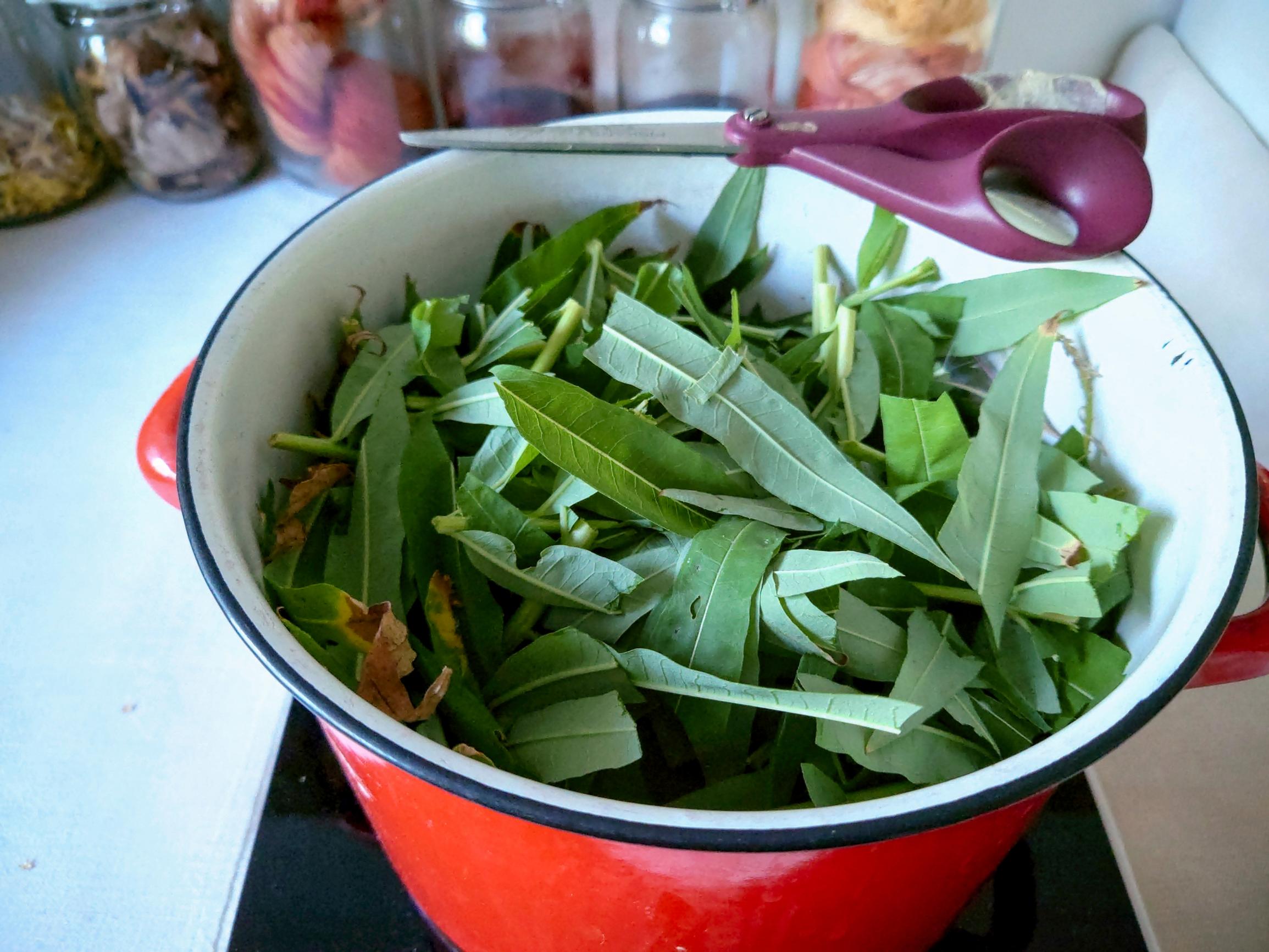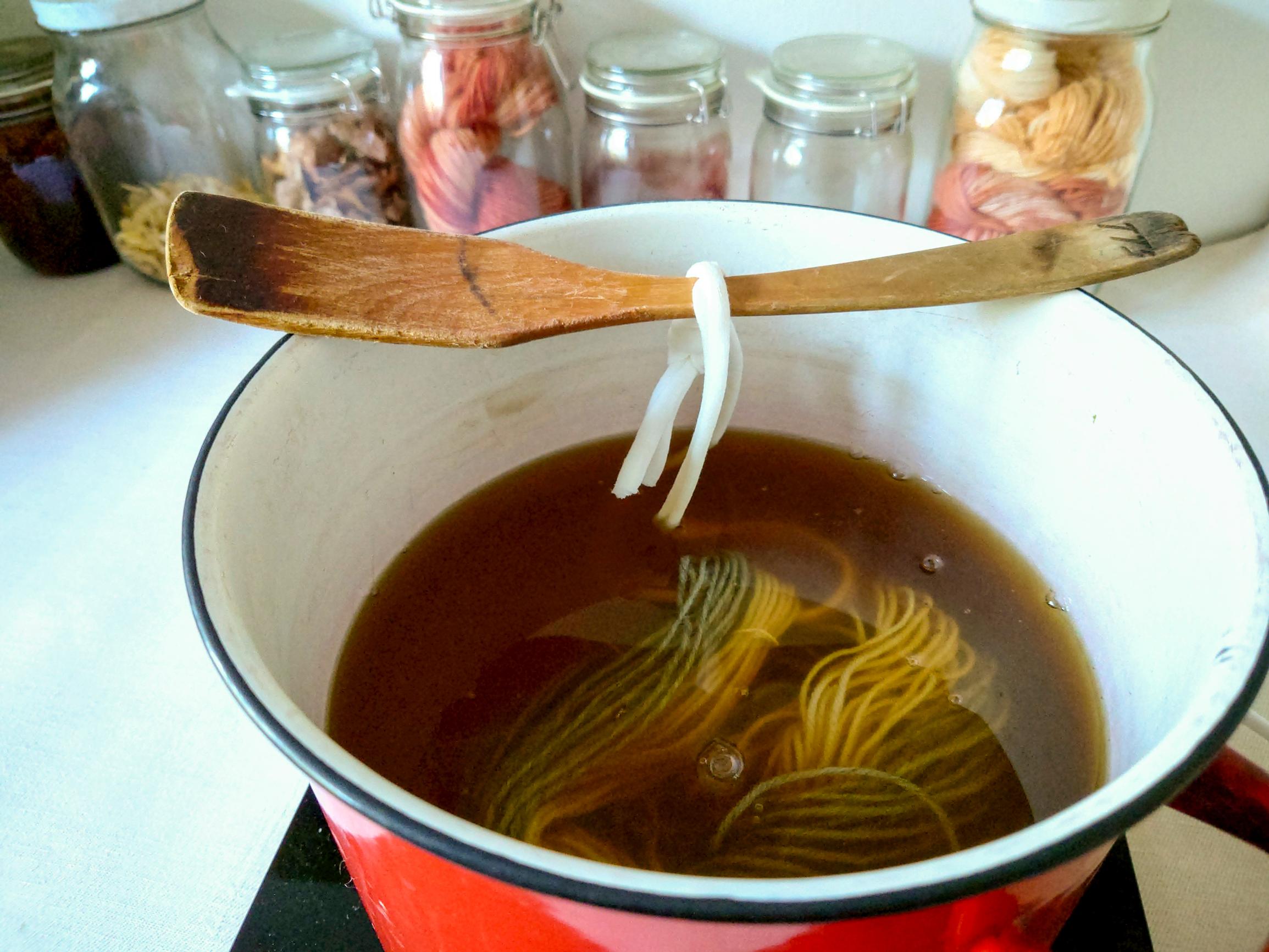
Dye your yarn with fireweed, meadowsweet, and nettle: here’s how
Dyeing yarn with plants is easy and fun! This time, we’re using fireweed, meadowsweet, and nettle. The same instructions also work for the invasive species lupine or even cow parsley. You can also dye fabrics with these instructions.
Dyeing yarn: materials needed
- 30 grams (about 1 oz) of the material to be dyed (for example, wool yarn or silk fabric)
- 300 grams (about 11 oz) of fresh dye plants (nettle, fireweed, or meadowsweet)
- scissors
- strainer
- 3 grams (about 0.1 oz) of alum as a mordant (around 1/3 tablespoon)
- a small 5–10 liter (1.3–2.6 gallon) dye pot and a suitable portable burner
- a couple of pieces of cotton yarn
- about 0.5 meters (1.6 ft) of rug yarn
Only dye with meadowsweet outdoors
Dyeing with meadowsweet must always be done outdoors. Its steam and scent are so strong that they can cause symptoms. Meadowsweet, like willow, contains salicylic acid. Using these plants is not recommended at all for people with allergies, asthma, or aspirin sensitivity.
How to dye yarn with plants: instructions

1. Chop the gathered plant as finely as possible. The color is easier to extract from chopped plants. Place the chopped plant in the dye pot. Add enough water to fully cover the plant pieces.

2. Simmer the plants for about 1–1.5 hours. You can check how the color is releasing every now and then. Once the plant matter turns into a loose mush and the water clearly takes on a juice-like color, the dye bath is ready.

3. Strain the dye bath into a bucket. Compost the spent plant matter.
4. Pour the dye bath back into the pot. Add more liquid if needed. For 30 grams (about 1 oz) of material, you’ll need about 2–2.5 liters (about 2.1–2.6 qt) of liquid.
5. Skein your yarn. Tie the yarn in a couple of places with a holding yarn. Hang the yarn from a length of rug yarn so that you can easily dip it in and out of the pot. If you are dyeing fabric, you can simply place it freely in the pot.

6. Cool the dye bath to 30 degrees Celsius (86°F). Moisten the material you plan to dye and lower it into the pot.
7. Raise the temperature to 40°C (104°F). Lift the material out briefly. Add alum, which acts as the mordant, to the liquid.
8. Lower the material back into the dye bath. Increase the temperature to the dyeing temperature of 80°C (176°F).
9. Let the materials dye at 80°C (176°F) for about an hour. Turn off the heat and leave the dye bath to cool overnight.
10. Wash the dyed yarn and fabrics thoroughly and rinse them until no more loose color comes out. Use a neutral detergent.
11. You can pour the remaining dye bath down the drain or let it soak into the ground. The leftover bath is usually so pale that you won’t get a strong second dye from it.
Tip!
You can also simmer a dye bath from lupine. Its stems and flowers lend beautiful shades of blue and yellow to wool.






